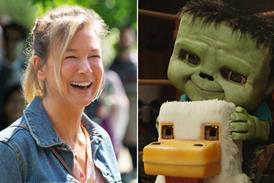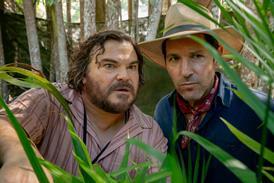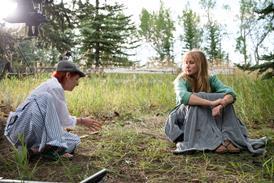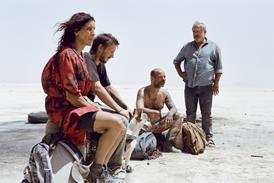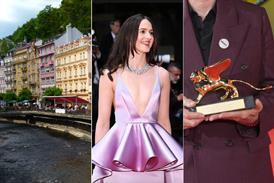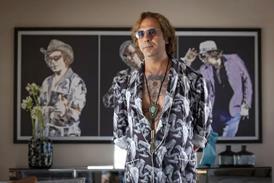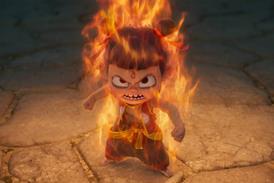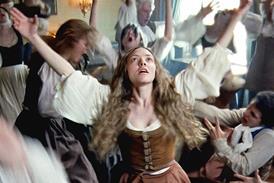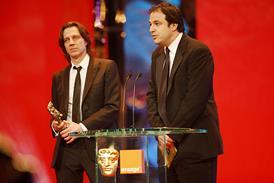The director’s non-narrative companion to ’The Love That Remains’ again features his three children
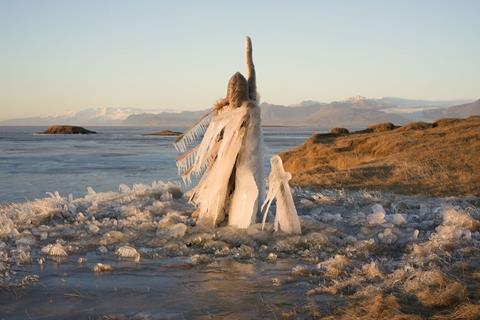
Dir/scr. Hlynur Pálmason. Iceland, Denmark, France. 2025. 62 mins.
Hlynur Pálmason’s Joan Of Arc is not to be confused with any of cinema’s previous depictions of the Maid of Orleans – although Carl Theodor Dreyer, who made the definitive Joan film in 1928, would probably have approved of this film’s formally rigorous minimalism. Pálmason’s non-narrative film is a sort of conceptual sidebar to the Icelandic director’s family drama The Love That Remains, which premiered in Cannes this year and is Iceland’s entry for the 2026 best international feature film Oscar. Like that film, it features his own children and the lifesize dummy they use as an archery target; but Joan Of Arc is essentially a portrait of three children at play, a landscape study and a cogitation on time and the elements.
An inspired sense of rhythm
Premiering in San Sebastian’s Zabaltegi-Tabakalera sidebar, it plays the festival alongside The Love That Remains and a solo exhibition of artwork by Pálmason at the Tabakalera venue, but it works as a standalone piece in its own right. In the outside world it seems likeliest to flourish as a piece to be shown alongside The Love That Remains, but one can also imagine it thriving as a gallery projection.
Pálmason is known for his fiction features Winter Brothers, A White, White Day and his international breakthrough, period drama Godland (2022). But his work often contains stylised passages depicting the passing of the seasons in his native Iceland, and in this spirit he made the 22-minute Nest (2022) a fixed-camera depiction of his three children building a tree house.
Joan Of Arc follows in that vein: its camera is set up on a stretch of shore initially seen in deep winter, before heavy snow thaws to reveal brown earth, then lush green grass. Throughout the film, Pálmason shows how extreme changes of light and temperature seem to transform the actual shape of the land when shot from the same position (the sea, when frozen over, seeming to become an extension of the shore itself).
Pálmason’s two young sons Grímur and Þorgils start digging a hole, taking time out for much tussling, shouting and often rough-looking horseplay; you wonder whether the camera was rolling without adult supervision, or whether Pálmason was present and simply chose not to stop them slinging heavy chunks of soil at each other. Eventually, a long pointed branch is planted in the hole, which becomes the support for a human figure which the boys gradually construct with help from their older sister, Ída Mekkín Hlynsdóttir – already familiar as a lively presence in her father’s previous films.
The figure – which starts out being referred to as ‘he’, before changing gender and eventually being dubbed ‘Joan’- becomes the trio’s target in their accomplished but cheerfully boisterous archery practice. And throughout, the weather changes, sometimes gradually, sometimes in rapid barrages of cuts, and it is easy to lose track of just how many winters go by.
A couple of Icelandic ponies occassionally enter the frame, and there are sequences that viewers will recognise from The Love That Remains – including one in which the three kids speculate on whether their parents still have sex; one brother says he once spotted them in the act, and that they seemed to be enjoying themselves. This is an interesting example of how the same footage can change meaning when placed in a different context: in the drama, the kids play the offspring of a fictional couple, Magnus and Anna, whereas here we’re aware of watching Pálmason’s children discussing their actual parents. It’s moot, in both cases, how much of the dialogue is scripted or pre-rehearsed – but either way, it’s fairly raucous and liberally laden with English expressions among the Icelandic (“Watch me, bro!”, “Hell yeah baby!”).
The film ends with a flourish, in a bizarre visual punchline. It’s questionable whether the picture sustains itself quite as consistently and engagingly as the 20-minute Nest, but it’s done with invention, an inspired sense of rhythm and manifest parental pride. The only music heard, at the start and end, is Isao Tomita’s electronic version of Debussy, a hit in the 70s under the title ‘Snowflakes Are Dancing’ – and indeed, the Icelandic snowflakes here come dancing thick and fast.
Production companies: STILL VIVID, Snowglobe
International sales: New Europe Film Sales, jan@neweuropefilmsales.com
Producers: Anton Máni Svansson, Katrin Pors
Cinematography: Hlynur Pálmason
Editor: Julius Krebs Damsbo
Main cast: Ída Mekkín Hlynsdóttir, Grímur Hlynsson, Þorgils Hlynsson





